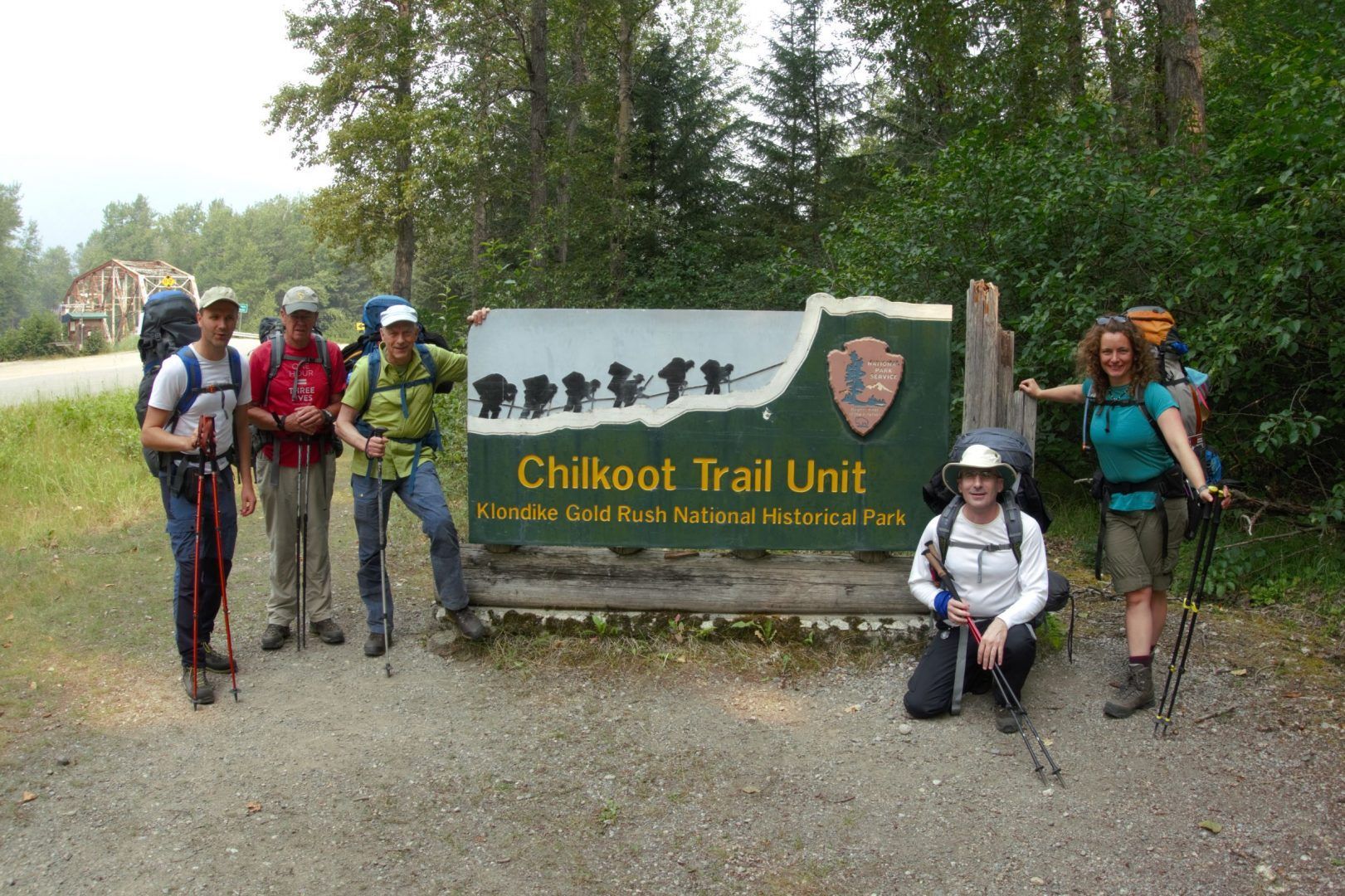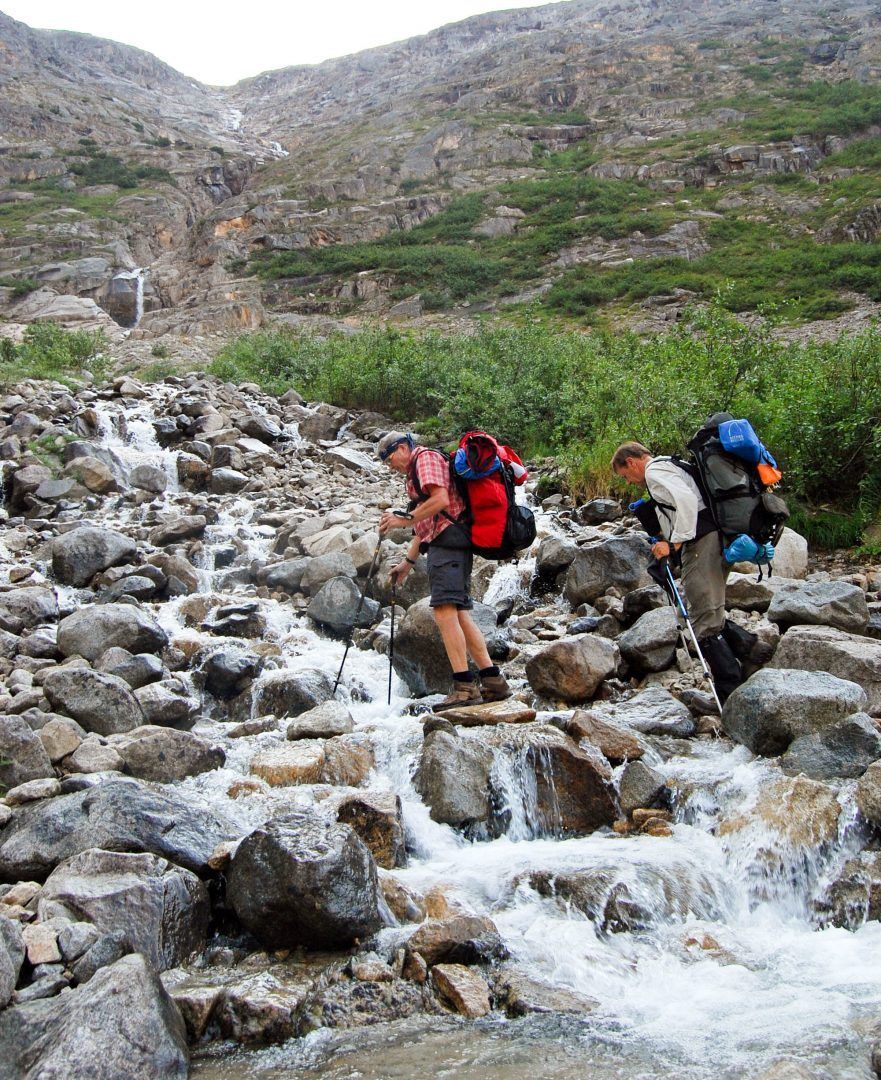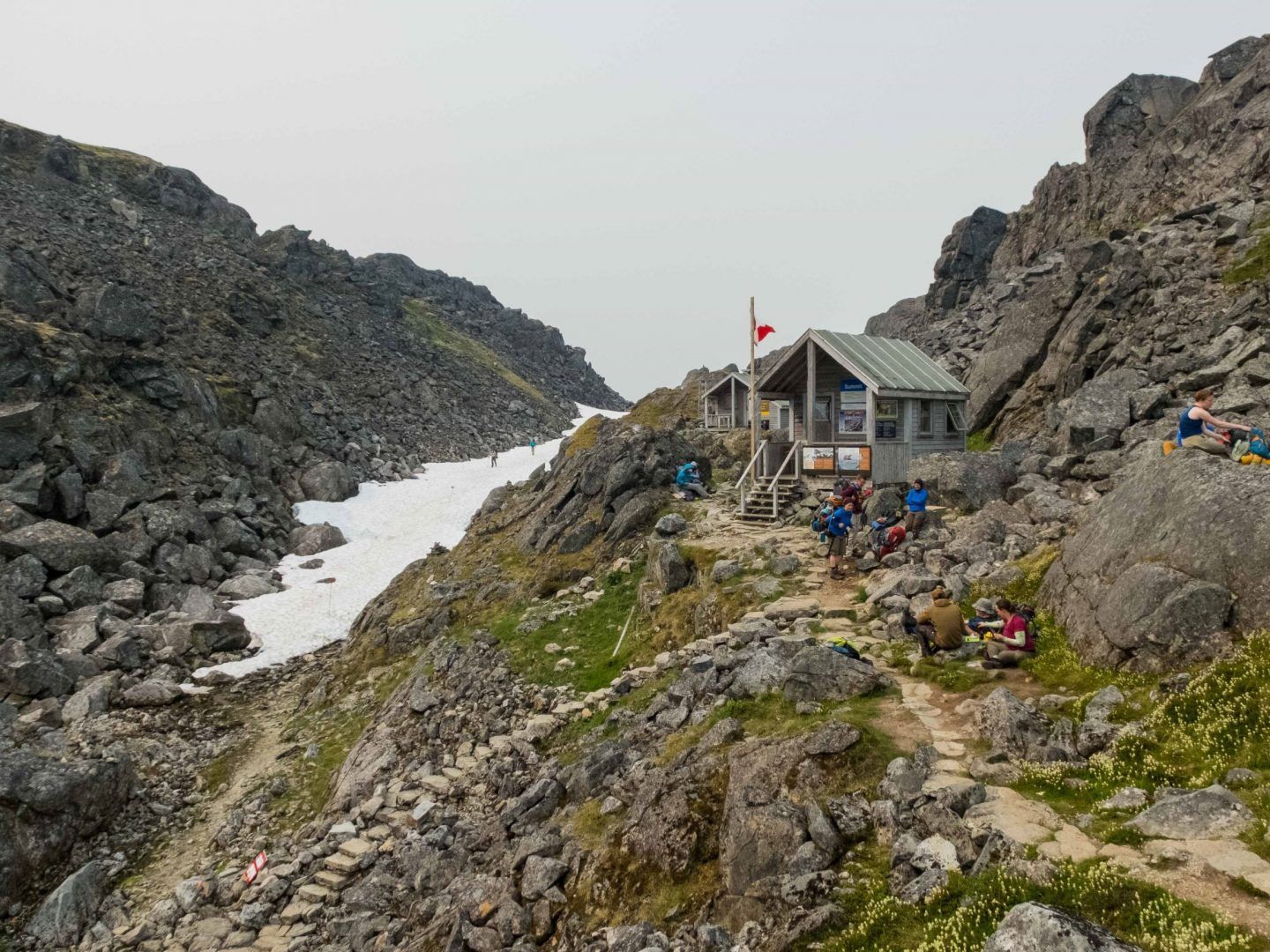Overview
The Chilkoot Trail is the original backpacker’s route to the far North, crossing some of the most spectacular and diverse landscapes anywhere in the world. It’s one of only a handful of routes cross the high glacier-covered ranges of the Northern Coast Mountains, and certainly the most legendary. In just twenty-six kilometres, the route climbs from sea level to the 1067-metre continental divide, where coastal Alaskan rainforest gives way to delicate alpine tundra and the trail crosses the international boundary into Canada. Though indigenous peoples had used this pass a trading route for millennia, the Chilkoot became an icon in 1898, with unforgettable images of hundreds of men and women staggered up the so-called Golden Stairs under crushing loads of food, caught up in the stampede to the gold fields at Dawson City.
Today, visitors are capped to ensure the trail does not become so crowded, and the packs are considerably lighter. We have allowed five days to backpack the entire 52 kilometres, ensuring time to rest, explore, and revel in the scenery. Our final destination is Lake Bennett, where most stampeders paused to build rafts and wooden boats for river journey to Dawson. Here, at the historic ghost town, we’ll meet a float plane for a final trip over the last of the Coast Mountains to Whitehorse.
To retrace the entire stampeders route, we recommend combining this trek with our canoe trip down the rest of the stampeder’s route to Dawson City. To learn more, have a look at our Yukon River Trip.
Day by Day Itinerary
Day 1 | Arrival in Whitehorse
Your guide will greet you at the airport and transfer you to your hotel in downtown Whitehorse. The rest of the day is at your leisure.
There are many interesting things to discover in Whitehorse. You can visit the longest wooden fish ladder in the world, the Beringia Centre for a glimpse of pre-historic Yukon and Alaska, the nearby Yukon Transportation Museum, or MacBride’s Museum of Yukon history. We also highly recommend a visit to the SS Klondike National Historic Site, a restored sternwheeler located next to the Yukon River.
Overnight hotel accommodation in Whitehorse.
Day 2 | Whitehorse - Finnegan’s Point
Today’s short transfer by road to Skagway will be a memorable one. The Klondike Highway is known as one of the most beautiful two-hour trips in North America, crossing over the Coast Mountains and the international border at White Pass. You will see the historic White Pass & Yukon Route Railroad, now a UNESCO International Civil Engineering Landmark. The White Pass Railroad was built in 1899 to assist in the transport of goods and people to the gold fields at Dawson City.
During the Klondike Goldrush of 1898, gold seekers arrived in Skagway by steamship, clamouring to make the thousand-kilometre journey to the gold fields at Dawson City. Today, the town is bustling with visitors and still retains its gold rush flavour. The boardwalks of Skagway are perfect for strolling. After visiting the historic town, we’ll travel 16km to Dyea, where we’ll start our hike on the Chilkoot Trail. We’ll cover a short distance to Finnegan’s point before making camp for the night (approx. 3 hours hiking time). This first part of the trail climbs steadily but gently along the Taiya River. Spruce trees tower above the trail and are home to eagles and the occasional black bear. Spawning salmon can be seen in the river in late summer.
Signs of the Klondike Gold Rush are also evident, from remnants of the old telegraph line built in 1898 to connect Skagway with Bennett and Log Cabin, to the 1950’s era logging road that forms the trail near our campsite. Finnegan’s Point is named for a fellow who built a bridge and for a short time collected tolls here from travellers who used it. The thousands of miners soon overran the bridge and his efforts to hold them back were futile.
You’ll end your day in view of the beautiful Irene Glacier across the river.
Overnight camping accommodation.
Day 3 | Finnegan’s Point - Pleasant Camp
After breakfast we’ll continue our adventure through the rain forest. There are lots of creek crossings as we follow the banks of the Taiya River.
This is a pleasant day with a few fairly steep but short climbs. The Rock Garden is a pleasant meadow with few trees and lots of small boulders, rolled to the side of the trail for easier walking. A little further ahead, we’ll reach Canyon City. Once a thriving town servicing the thousands of miners on their way to Dawson, all that remains today are the foundations of a few buildings, a stove and some pots and pans, and the old boiler that powered a tramway. In 1898 you could save a lot of time and effort by using the hastily-built tramway to get your goods over the pass for 7.5 cents/pound…or $5 in today’s money!
We’ll cross a suspension bridge near Pleasant Camp and soon we will arrive at Sheep Camp, where we’ll rest for the night.
Overnight camping accommodation
Day 4 | Sheep Camp - Happy Camp
Today is our longest, but most memorable part of the hike. We’ll have an early breakfast and hit the trail in order to cover the 13km to Happy Camp.
Shortly after departing, we’ll pass through the Enchanted Forest; a region of gnarled trees, twisted and pitted due to massive snowfalls that bury them under several meters each winter. You’ll see many gold rush artifacts littering the trail as it begins to climb towards the Scales, where, after weeks of hauling a ton of goods up from Skagway, 50 kilos at a time, the stampeders began to toss aside the non-essentials. Surprisingly the “Treeline” sign is surrounded by trees, proof the weather was colder in 1898 than today. But not much further along, the last tree appears, and then disappears, and soon there is nothing but rock in all directions. This is where the avalanche that claimed the lives of many gold miners in the spring of 1898 occurred, and the victims are buried nearby.
A little further and we arrive at the Scales, where the Royal Canadian Mounted Police weighed the goods of each person entering the Yukon to ensure they had their mandatory one ton of provisions before being allowed to continue. The trail goes as steep as forty degrees as you travel up the Golden Stairs. This is where the famous photos of the long lines of men and women bent over from their toil were taken in 1898. It’s a tough climb, scrambling over and around large boulders, but we’ll soon reach the top and cross the border between Alaska and Canada, at over 1100 meters (3700 feet) above sea level! From here we’ll descend over snowfields, passing small lakes, creeks and rock outcrops to reach Happy Camp in the late afternoon.
Overnight camping accommodation
Day 5 | Happy Camp - Lake Lindemann
The trek from Happy Camp to Lindeman is thought by many to be the best part of the trail. There are some spectacular views, and more importantly, the trail is relatively flat (except at Long Lake).
Deep Lake will soon appear, as will the first trees, before the trail begins to drop in elevation as we follow Moose Creek as it tumbles down from Deep Lake to Lake Lindeman, where we’ll camp for the evening.
Overnight camping accommodation.
Day 6 | Lake Lindeman - Bennett Lake
With just one more day of hiking left, this is a morning of mixed emotions. The end of the trail is near, but there is still some beautiful scenery to be enjoyed as we continue our trek, first to Loon Lake and onwards to Lake Bennett. One of the most stunning vistas in British Columbia is found here, overlooking Lake Bennett.
As we approach Bennett Lake, we catch glimpses of the old gold rush era church and rail station, all that remains of a community that once was home to over 15,000 people. After a short look around, our float plane will arrive to pick us up for the spectacular 45-minute flight to Whitehorse.
We have the option here of booking additional flight time to take a tour over the great glaciated ranges of the Coast Mountains, a spectacular addition that is highly recommended.
Upon arrival in Whitehorse, we’ll pick you up from the airport and bring you to your hotel, where you can finally enjoy a hot shower and a restaurant dinner with your guide and friends.
Overnight hotel accommodation in Whitehorse.
Day 7 | Depart Whitehorse
After breakfast, we’ll bring you to the airport for your flight south, or connect you with your next adventure.




















